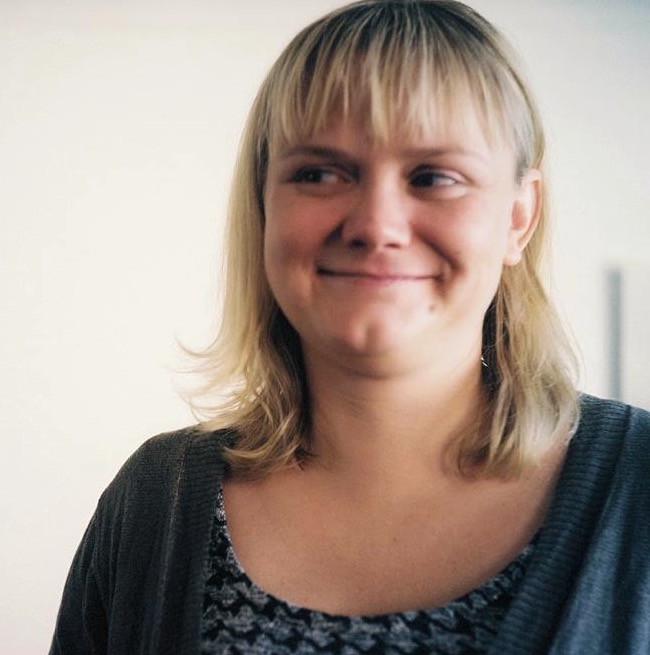String lights illuminate a small clearing wedged between the monsoon-weathered buildings of Dharavi. With lanes too narrow even for motorised carts, Dharavi might be the quietest spot in the world’s noisiest city, but here a small throng of residents are nattering like starlings. A hand-painted sign on a pushcart announces MUSEUM in the neo-Memphis split-complementary palette that seems to have saturated the design world from Milan to Cape Town of late, and now India. Under the twilight sky, white plinths display multi-coloured ceramic water-coolers and chai cups, and all that distinguishes the street from the museum are woven grass mats.
For founders Jorge Mañes Rubio and Amanda Pinatih, Design Museum Dharavi is based not on the notion of a museum as a place for codifying or preserving artefacts, but for rejuvenating the everyday. As a provocation to the Western mausoleum of dead ideas, Design Museum Dharavi presents an institutional model of knowledge as a community hub of social interaction and mutual validation. As such, the very fabric of its surroundings – the informality, nomadism, oral culture, resourcefulness, elastic sense of time, and responsive contemporaneity of its residents and makers – shapes it. By using the symbolic capital of ‘museum’ to bestow authority without a price tag, Design Museum Dharavi allows everyday talent and skills to be seen from a renewed perspective.

The idea for this museum came to Rubio, an Amsterdam-based Spanish artist and designer, while assisting on a Droog research project with photographer Bas Princen in 2011. During the project, he met Matias Echanove and Rahul Srivastava of URBZ experimental urban research collective, who then became consultants. Joining forces with Pinatih, a Dutch art historian and curator, the concept was born. Locals like community networker Shyam Kanle and typographer Kruti Saraiya were also integral to actualising the project. Social relations were crucial. “The process that culminates in the exhibition is the most important thing, not necessarily the result or exhibition itself, but rather the whole collaboration with the makers of Dharavi”, explains Pinatih.
While the act of Western designers going into a community in an underdeveloped country is fraught with political and social issues, Saraiya said that her own stereotypes of these sorts of projects were challenged by working with Pinatih and Rubio. Saraiya was speaking at an Amsterdam symposium that reflected on this. A catalogue and toolkit sharing the lessons and insights gained during the development process was also launched. Challenging rhetorical questions about the real impact of what design can do, kept the debate raging-on long past closing time. Perhaps we are asking too much of design, though, and using a critique of its limitations as a way to avoid talking about the actual issues. As the URBZ team pointed out, based on years of grassroots, on-the-ground experience, it is not about redesigning but about exposing existing patterns. Users are very good at shaping their own space, something also too easily forgotten in Europe.

 Screen-printed poster announcing Design Museum Dharavi’s pottery display
Screen-printed poster announcing Design Museum Dharavi’s pottery display
 Pottery-making in a workshop run by the museum
Pottery-making in a workshop run by the museum
 Potter Nathalal Chauhan teaching his craft during an open event at the museum
Potter Nathalal Chauhan teaching his craft during an open event at the museum
 One of the many colourful streets in Dharavi
One of the many colourful streets in Dharavi
 The cricket bats exhibited at Design Museum Dharavi
The cricket bats exhibited at Design Museum Dharavi
 The team posing with their trophy in the shape of three golden stumps, after winning the local cricket tournament organised by Design Museum Dharavi / Displayed in the museum were the uniquely crafted cricket bats; the uniform shirts with their intricate hand-embroidered motif; and the handcrafted cricket gloves.
The team posing with their trophy in the shape of three golden stumps, after winning the local cricket tournament organised by Design Museum Dharavi / Displayed in the museum were the uniquely crafted cricket bats; the uniform shirts with their intricate hand-embroidered motif; and the handcrafted cricket gloves.
 Local carpenter Sandeep crafting cricket bats from reclaimed wood
Local carpenter Sandeep crafting cricket bats from reclaimed wood
 Design Museum Dharavi’s second exhibition, which was accompanied by a community cricket tournament
Design Museum Dharavi’s second exhibition, which was accompanied by a community cricket tournament
 Screen-printed poster announcing Design Museum Dharavi's display of handcrafted brooms
Screen-printed poster announcing Design Museum Dharavi's display of handcrafted brooms
 A broom-maker sketching some possibilities for a parasol
A broom-maker sketching some possibilities for a parasol
 A local embroiderer working on the motifs for the cricket uniforms worn during the tournament
A local embroiderer working on the motifs for the cricket uniforms worn during the tournament


